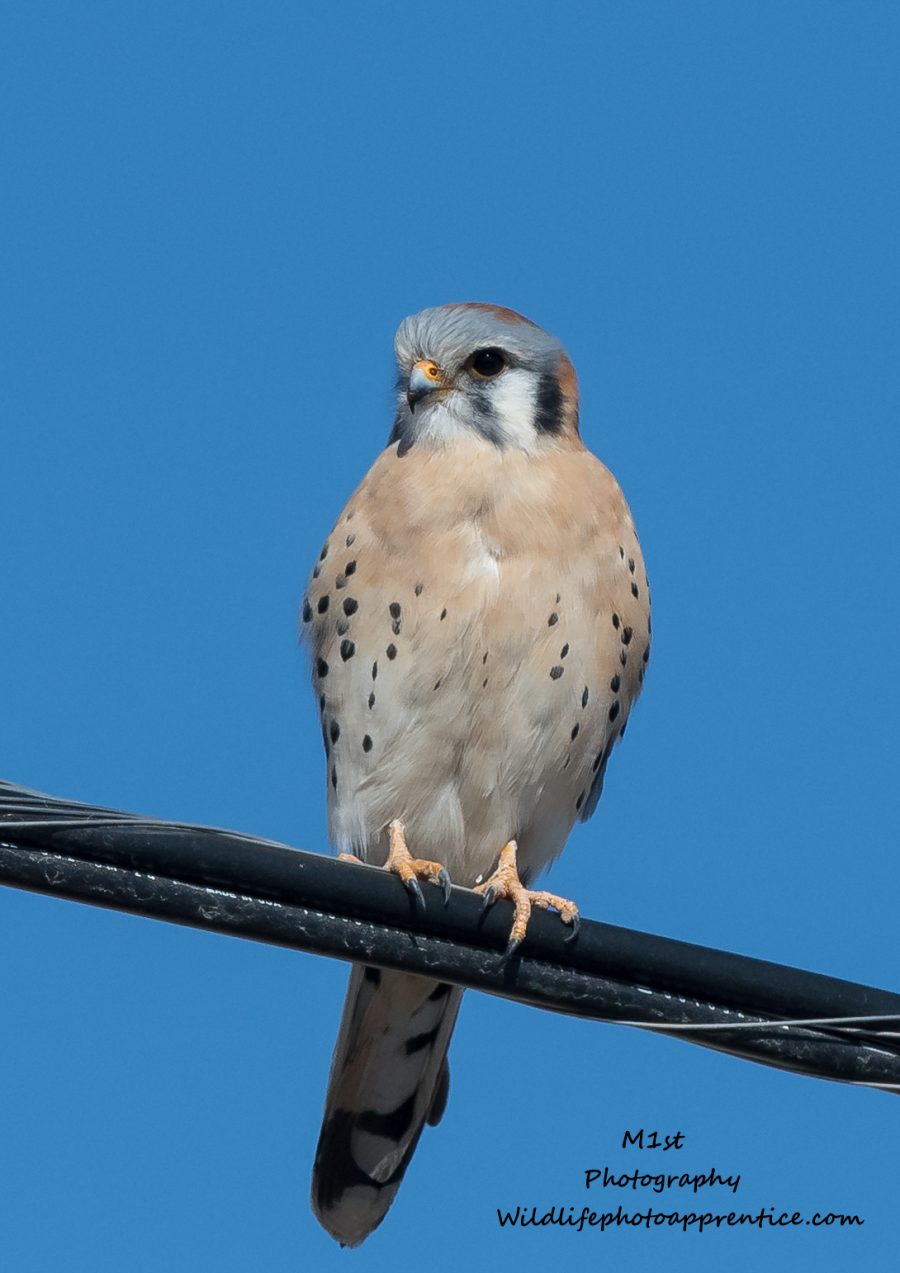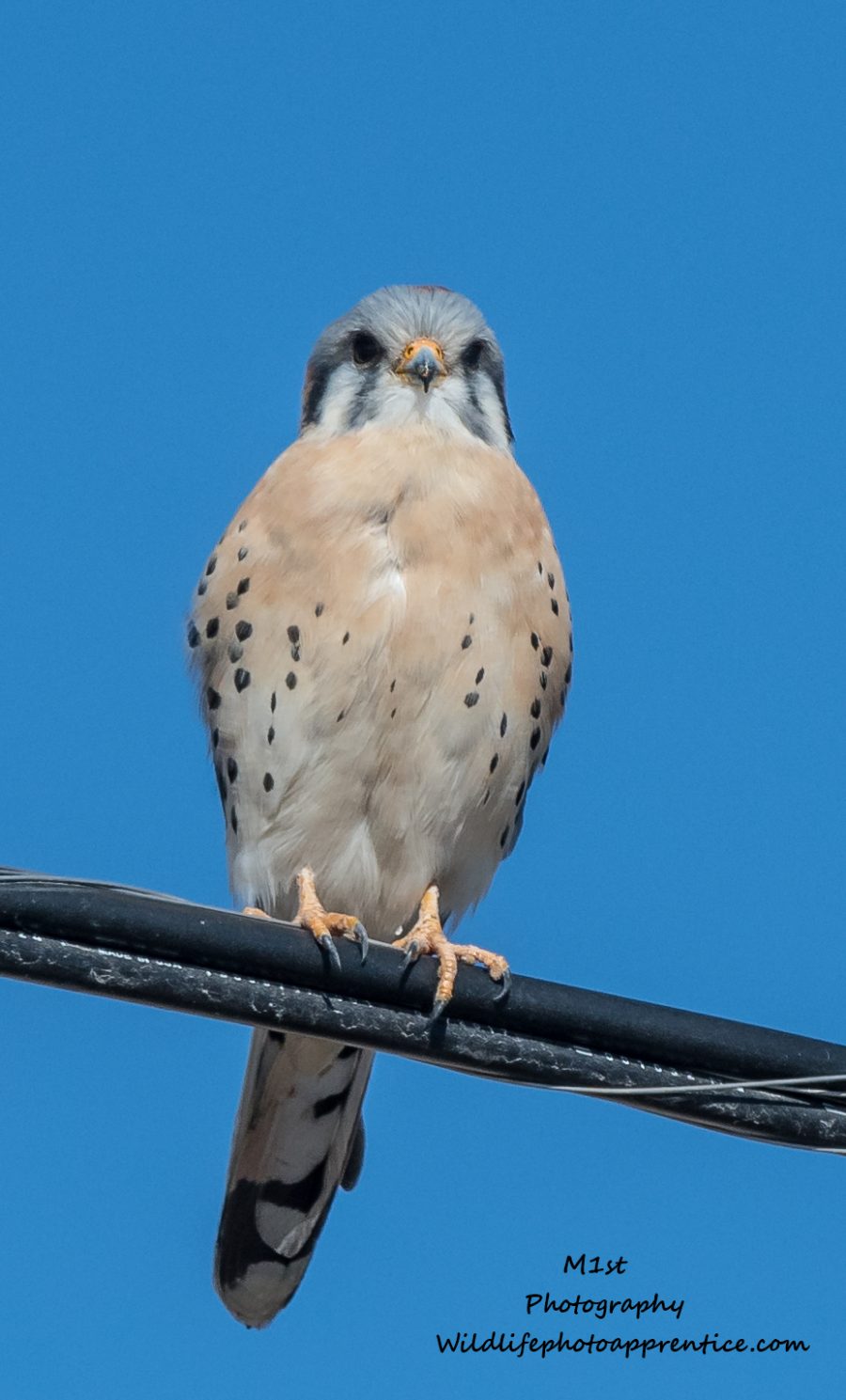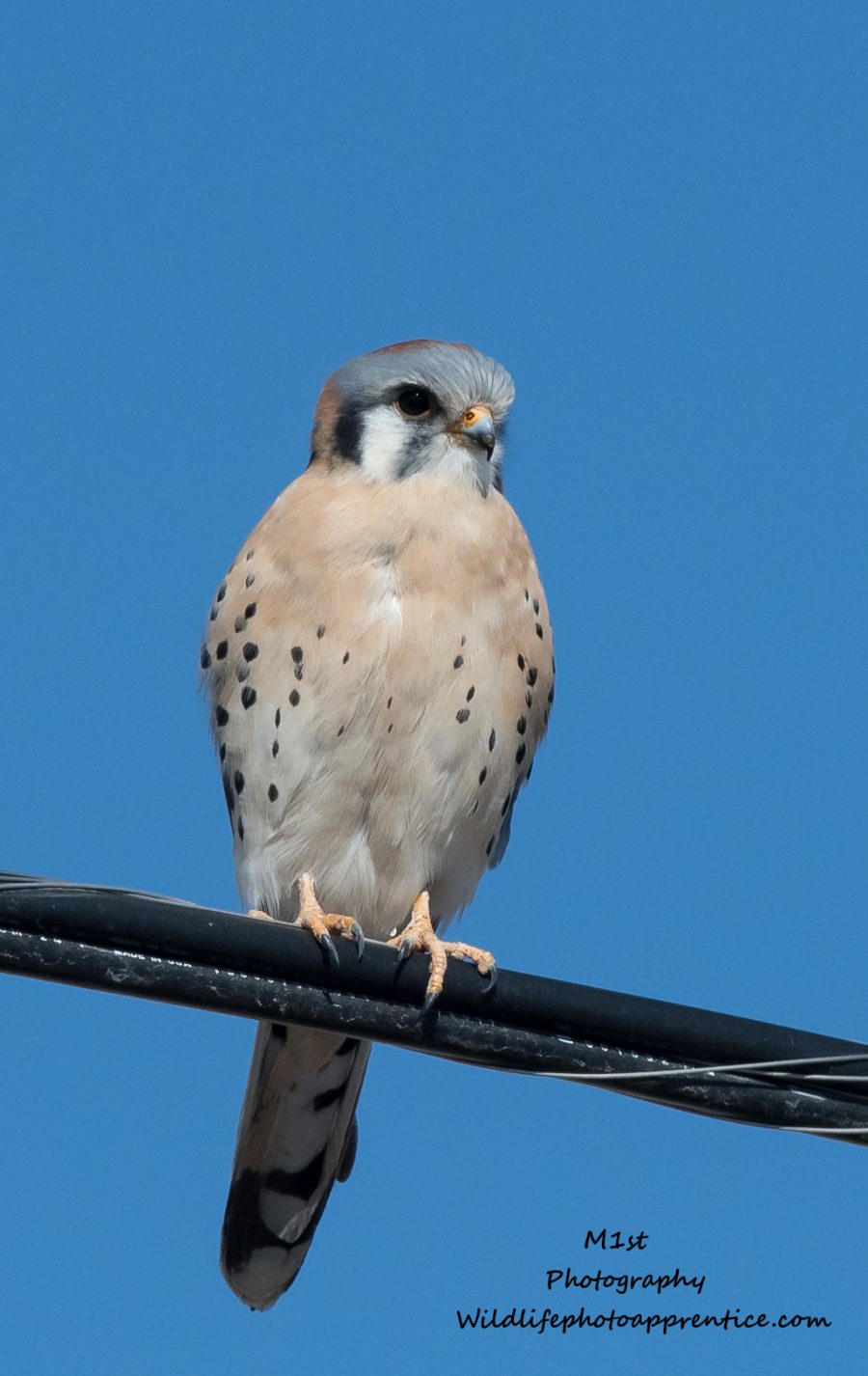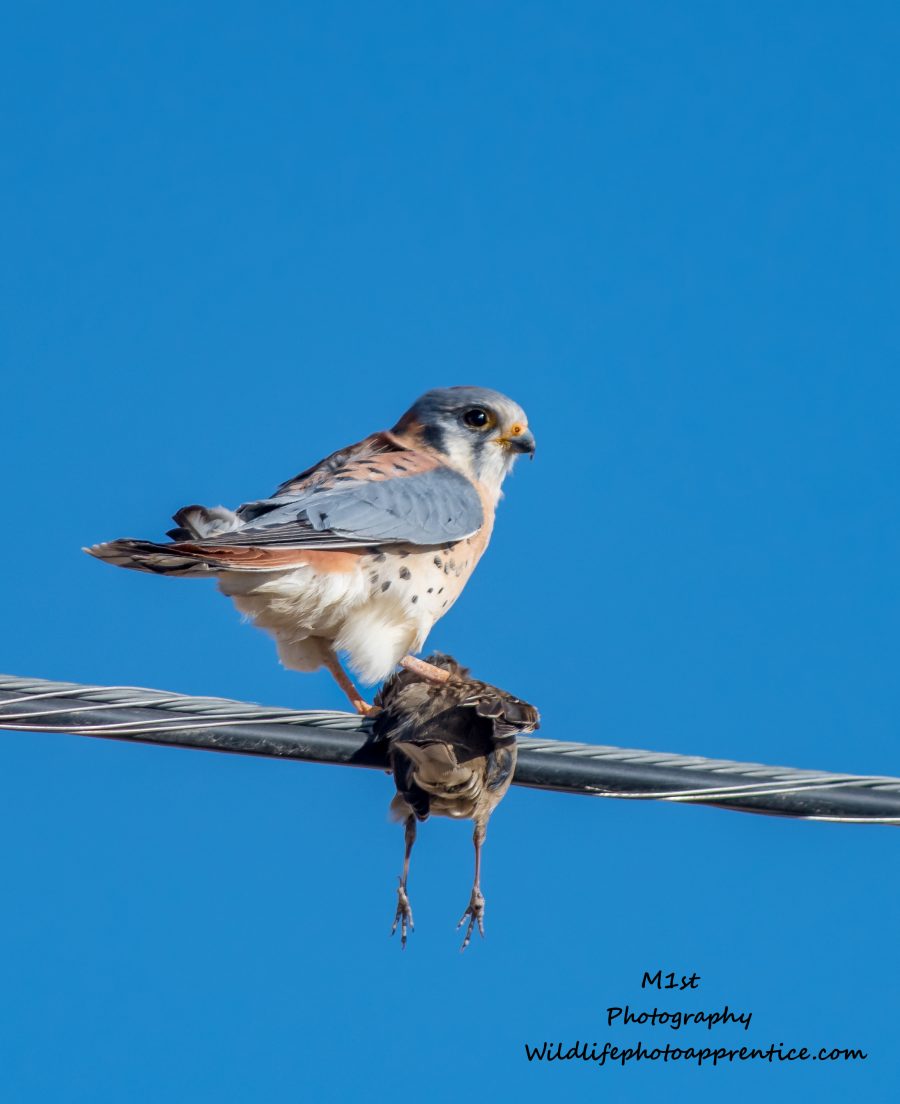
Went out this morning and not much was happening. I make it a habit to always scan the high wires and roadside as I drive back home from wherever I have been taking photos for the day. Birds of prey often use these open areas and high perches to ambush prey. Today I noticed a small bird of prey and stopped to check it out. It was an American Kestral.
North America’s littlest falcon, the American Kestrel packs a predator’s fierce intensity into its small body. It’s one of the most colorful of all raptors: the male’s slate-blue head and wings contrast elegantly with his rusty-red back and tail; the female has the same warm reddish on her wings, back, and tail. Hunting for insects and other small prey in open territory, kestrels perch on wires or poles, or hover facing into the wind, flapping and adjusting their long tails to stay in place.

-
Size & Shape
The slender American Kestrel is roughly the size and shape of a Mourning Dove, although it has a larger head; longer, narrow wings; and long, square-tipped tail. In flight, the wings are often bent and the wingtips swept back.
-
Color Pattern
American Kestrels are pale when seen from below and warm, rusty brown spotted with black above, with a black band near the tip of the tail. Males have slate-blue wings; females’ wings are reddish brown. Both sexes have pairs of black vertical slashes on the sides of their pale faces—sometimes called a “mustache” and a “sideburn.”

-
Behavior
American Kestrels usually snatch their victims from the ground, though some catch quarry on the wing. They are gracefully buoyant in flight, and are small enough to get tossed around in the wind. When perched, kestrels often pump their tails as if they are trying to balance.
-
Habitat
American Kestrels occupy habitats ranging from deserts and grasslands to alpine meadows. You’re most likely to see them perching on telephone wires along roadsides, in open country with short vegetation and few trees.
As I photographed him, he suddenly swooped from his perch into a nearby bush. Soon after he returned to his perch with the results of his hunt, a small sparrow. I was rewarded with several nice shots.
 Paying attention to the roadside and highwires on you drive home is a good habit to get into and will make you a more productive wildlife photographer.
Paying attention to the roadside and highwires on you drive home is a good habit to get into and will make you a more productive wildlife photographer.

I just seen one a male at Gazely Suffolk
Excellent article! We are linking to this great post on our website.
Keep up the great writing.